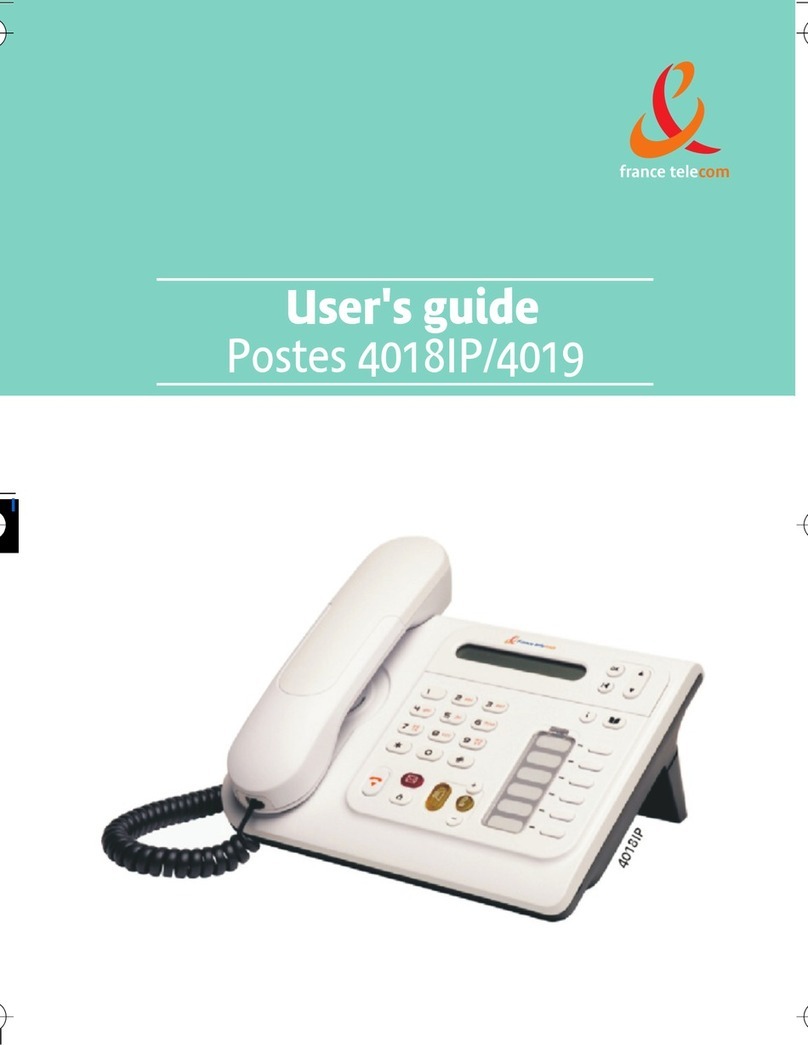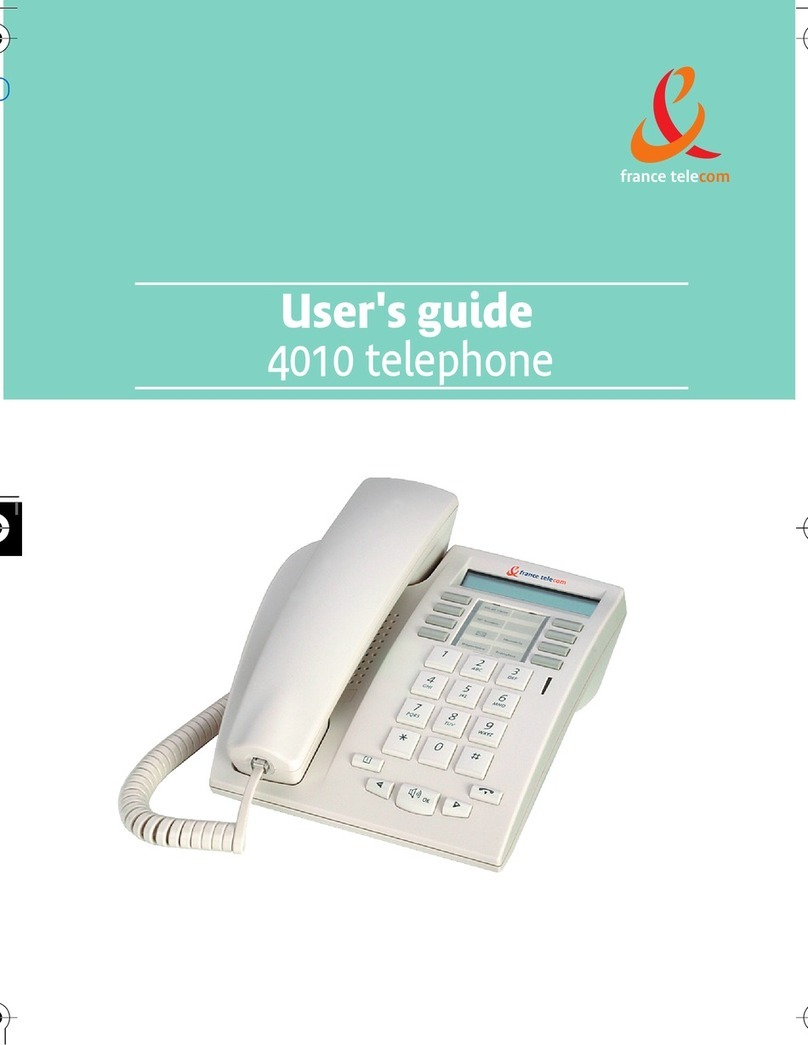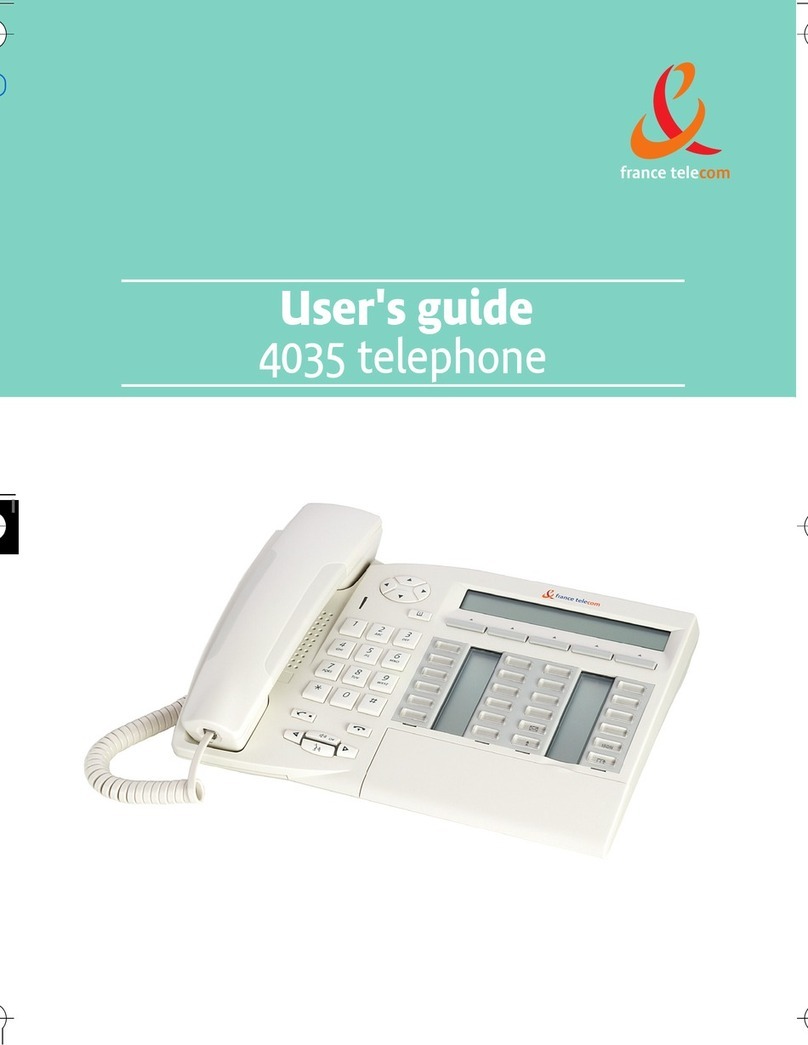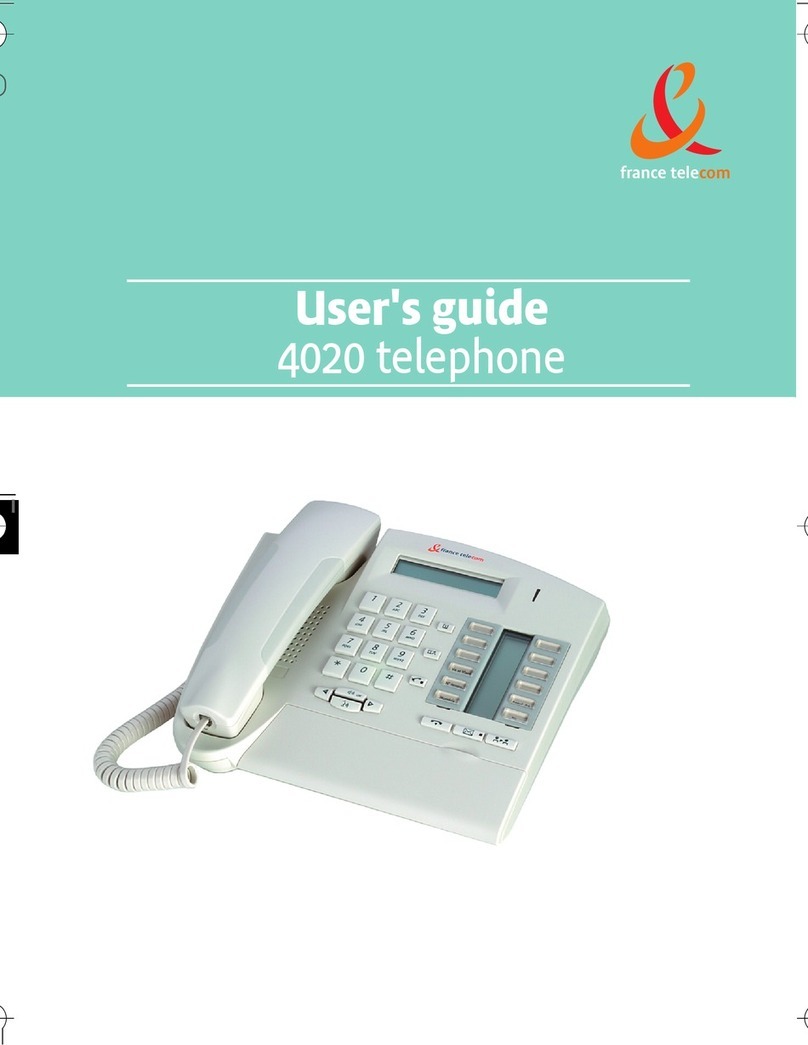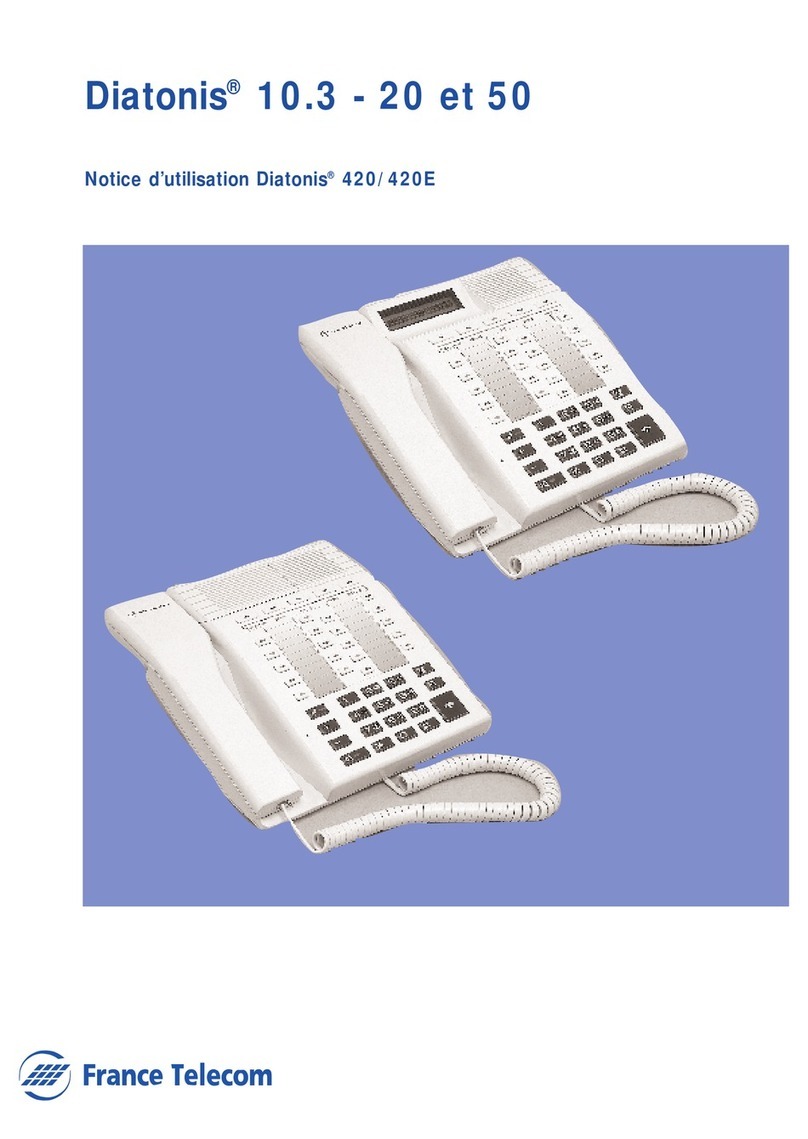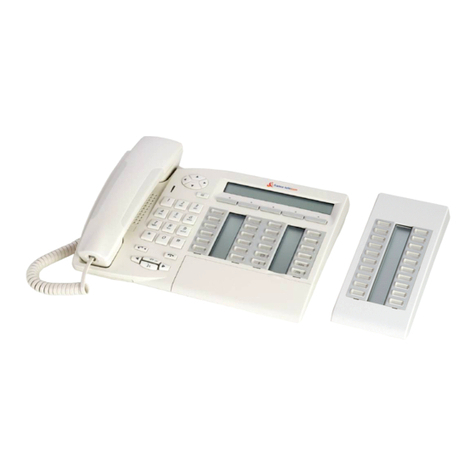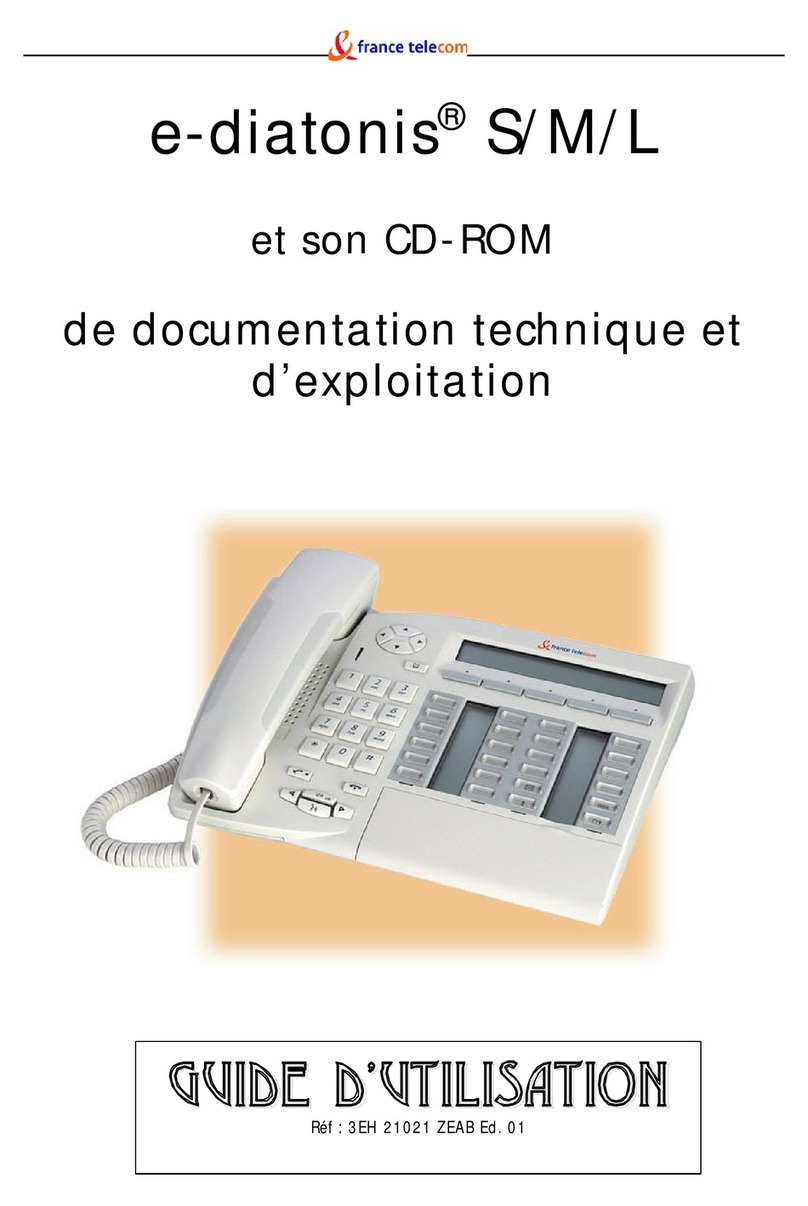
5
Contents
5
2. During a conversation . . . . . . . . . . . . . . . . . . . . p. 22
2.1 Making a second call during a conversation . . . . . . . . . . p. 22
2.2 Answering a second call during a conversation . . . . . . . p. 23
2.3 Transferring a call . . . . . . . . . . . . . . . . . . . . . . . . . . . . . . p. 24
2.4 Switching between calls (Broker call) . . . . . . . . . . . . . . . p. 25
2.5 Three-way conference with internal and/or external
correspondents (conference) . . . . . . . . . . . . . . . . . . . . . p. 25
2.6 Placing a call on hold (hold) . . . . . . . . . . . . . . . . . . . . . . p. 26
2.7 Placing an outside call on hold (parking). . . . . . . . . . . . . p. 27
2.8 Getting information about camped-on calls . . . . . . . . . . p. 28
2.9 Intrusion into an internal conversation. . . . . . . . . . . . . . p. 29
3. Sharing . . . . . . . . . . . . . . . . . . . . . . . . . . . . . . . . . p. 30
3.1 Receiving supervised call ringing . . . . . . . . . . . . . . . . . . . p. 30
3.2 Answering the general bell . . . . . . . . . . . . . . . . . . . . . . . p. 30
3.3 Manager/secretary filtering . . . . . . . . . . . . . . . . . . . . . . . p. 31
3.4 Call pick-up . . . . . . . . . . . . . . . . . . . . . . . . . . . . . . . . . . . p. 31
3.5 Answering briefly in place of the operator. . . . . . . . . . . p. 32
3.6 Monitoring calls to other terminals . . . . . . . . . . . . . . . . p. 33
3.7 Hunting groups . . . . . . . . . . . . . . . . . . . . . . . . . . . . . . . . p. 33
3.8 Calling an internal correspondent on his/her pager. . . . p. 34
3.9 Calling a correspondent on his/her loudspeaker . . . . . . p. 34
3.10 Sending a written message to an internal correspondent p. 35
3.11 Sending a written message to an ISDN correspondent . p. 37
3.12 Send a voice message copy . . . . . . . . . . . . . . . . . . . . . . . p. 37
3.13 Sending a recorded message to a number / a distribu-
tion list . . . . . . . . . . . . . . . . . . . . . . . . . . . . . . . . . . . . . . . p. 39
3.14 Broadcasting a message on the loudspeakers of a station
group . . . . . . . . . . . . . . . . . . . . . . . . . . . . . . . . . . . . . . . . p. 40
3.15 Answering a call on your pager. . . . . . . . . . . . . . . . . . . . p. 40
3.16 Allocating an outside line . . . . . . . . . . . . . . . . . . . . . . . . p. 41
